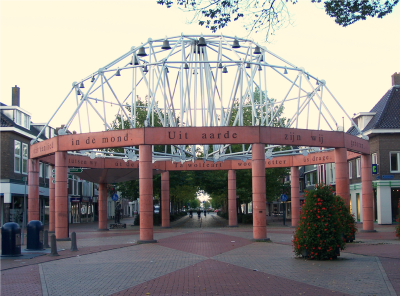Brief description of solved problem: Deregulation of traffic
Country of origin: Holland
Type of self-government: City
Name of self-government: Drachten, Holland (solution is also applied in self governments in Germany, Denmark, USA, Sweden etc…)
Date of realization: currently
Detailed description of solved problem
Every public authority has a tendency to regulate human behaviour by various types of regulations. It is necessary to distinguish between a proper and improper type of regulation. The improper regulation prevents from behaving in rational ways and such a regulation also inflicts expenses. It is quite difficult to see the difference between proper regulation and improper regulation, because in some cases there is intuitive knowledge about the necessity of regulation, but the application of alternative methods can bring interesting results, by a reason that our ability to create, and to respect rules is not perfect. There is always a possibility of breaking rules. This type of a problem is regulation of traffic, for example, road signs and rules. A typical example of inefficiency of this regulation is a situation when the driver has to stop at red traffic light, even though there are no other cars, or pedestrians. In such a case, a reasonable solution is to carry on driving and save the time. But such behaviour is prohibited by regulation. Similar regulations reduce the flow of traffic and this regulation is also, paradoxically, a threat to other people. In the city of Drachten, Holland this problem is solved by removing most road signs.
Detailed description of strategy of solution
The strategy of solution can be called go slower to move quicker. For a long time roads have been built on a principle of separation of car and bikers or pedestrians. This strategy seems logical if the car can cause greater damage to pedestrian or biker, than pedestrian to car. In the city, there is a need to protect pedestrians, and the traffic is slowed by regulations – road signs, traffic lights, ped crossing etc. A disadvantage of such a solution is that drivers rely on such regulation, and do not solve the problems by interaction with “traffic environment”. The author of this strategy, engineer Hans Mondermann, explains: “I do not care who has the right of way, because people themselves have to find the solution to traffic problems. They have to use their own brains”. Mondermann removed most road signs and traffic lights at busy crossroads in Drachten, he even did not use curbstones for marking the edges of roads (they were marked by colours, or textures). The result is that drivers have to go slower and more carefully, because they have to respect pedestrians and bikers, but they do not lose time by waiting in crossroads. The traffic is slower but more fluent and safer (because the driver has to use his brain, instead of the road signs). The following are the principles of these solutions: 1. remove road signs, because the road itself limits the traffic, 2. have fewer restrictions, but provide more data about the traffic density, and people will decide which road they will use, 3. priority depends on human interaction, not on rules and road signs. The rules how to behave in specific places will be developed by evolution quickly and effectively.
Description of results of solution
A similar strategy is also applied by other self governments. Kensington Street in London has been rebuilt on similar principles. There were 71 collisions involving drivers and pedestrians. This number decreased to 40 (43,7% less) when the reconstruction was finished. Similar results were achieved in West Palm Beach, Florida, USA. In Drachten, the number of collisions between cars and pedestrians decreased from 36 during 4 years before reconstruction to 4 during 2 years after reconstruction. The positive tendency is clear. 22 000 cars per day go though the reconstructed crossroads, but the traffic jams do not happen often. The number of traffic lights was reduced from 15 to 3. In the city of Norrkoping (Sweden), the average speed for cars was reduced by 5 km/hour. The data is evidence that human interaction is rational, and the people are able to unwillingly create clear and correct rules if they are not bound by regulation.
Sources:
http://www.artofwealth.net/2005/01/go-slower-to-move-quicker-in-praise-of.html
http://en.wikipedia.org/w/index.php?title=Shared_space&printable=yes



